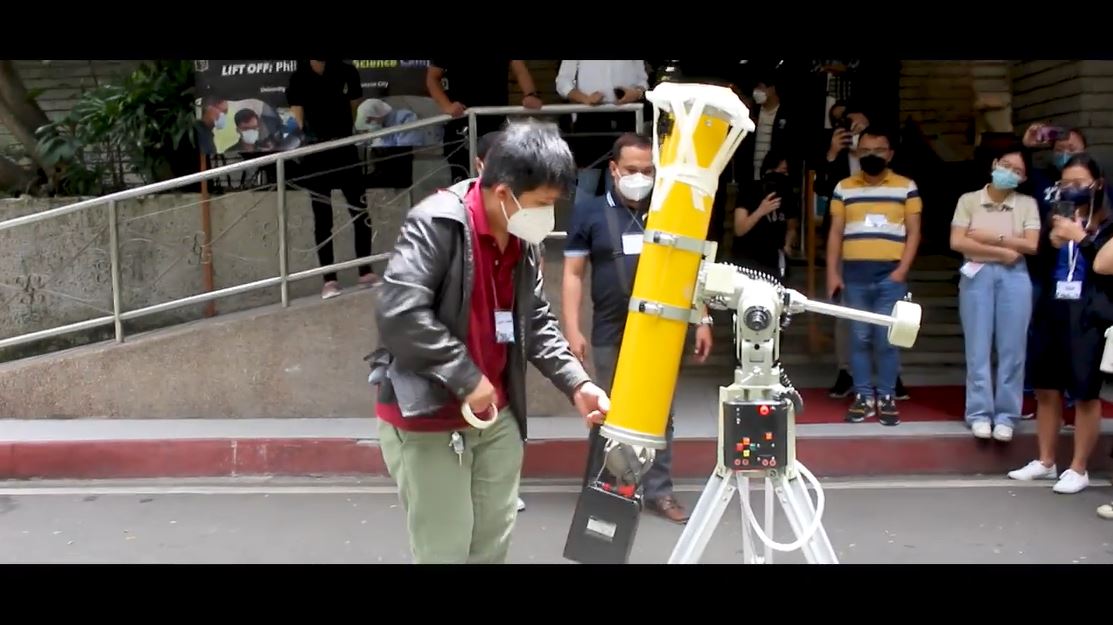
Filipino senior high school students were hailed for fusing space science with environmental mission during a recent hybrid camp led by the Philippine Space Agency (PhilSA).
Two missions – one from the City of Mandaluyong Science High School and another from the Caloocan City Science High School – stood out among the proposals from 14 science high schools from Metro Manila that joined the camp to present their space missions at the “Touch Down Earth: Space Mission Proposals” event.
The activity was designed to see whether the participants were able to learn the concepts from lectures on space missions and satellite payloads.
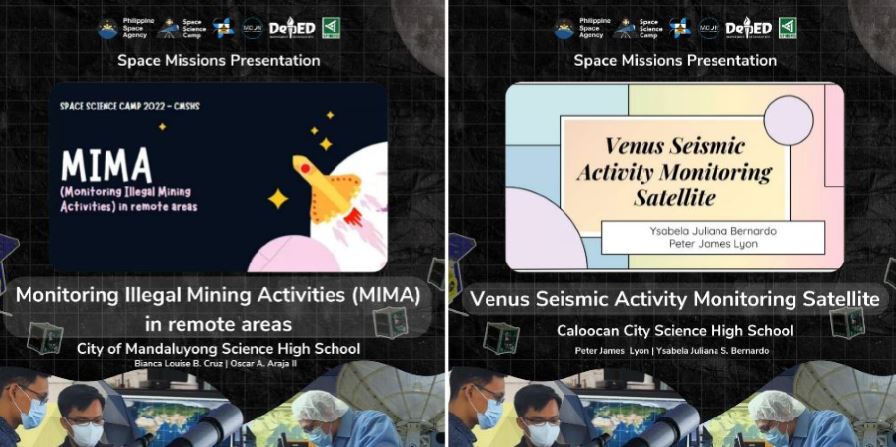
Mandaluyong City SHS’ Monitoring Illegal Mining Activities in Remote Areas (MIMA) by Bianca Louise B. Cruz and Oscar A. Araja II and Caloocan City SHS’ Venus Seismic Activity Monitoring Satellite (V-SAMS) by Peter James Lyon and Ysabela Juliana Bernardo were cited during the culminating activity of the three-day hybrid camp held in July 2022.
The students behind MIMA explained that their satellite mission aims to protect the environment and strengthen the implementation of mining laws and regulations in the country. Based on their proposal, MIMA would be a Synthetic Aperture Radar (SAR) satellite that could see through the cloud cover to detect changes in areas where mining activities could be present. It would use optical imagers to capture images.
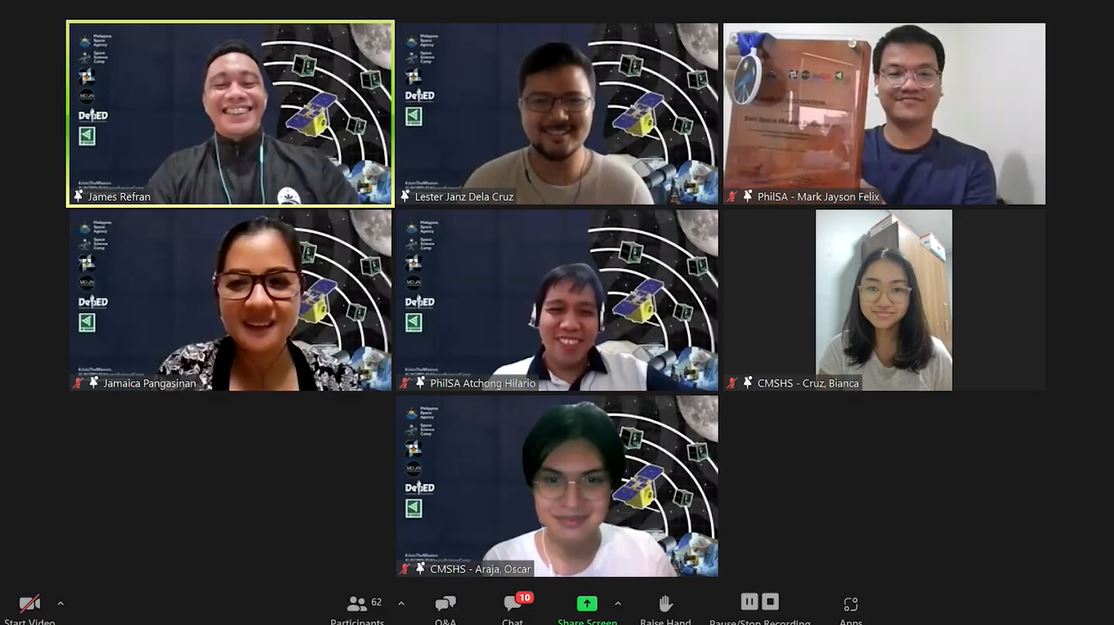
The objective of V-SAMS, on the other hand, would be to learn more about the Earth’s twin planet, Venus, particularly, its seismic activities. To be able to achieve this, V-SAMS would use infrared imaging to monitor the surface temperature of Venus’ volcanoes, identify which ones will erupt, and discover other active volcanoes on the planet. It would also have an interferometric SAR (InSAR) to detect deformations and signs of seismic activity on Venus’ surface. In addition, V-SAMS would be equipped with an optical payload to take high-resolution images.
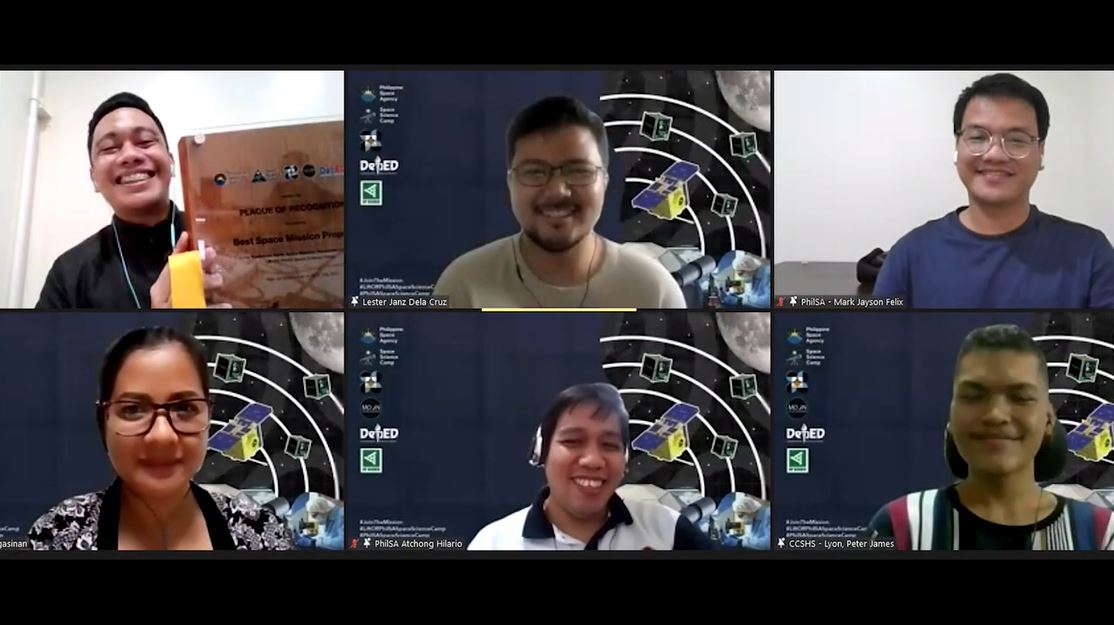
Jamaica Pangasinan, PhilSA Senior Science Research Specialist at the Space Mission Control and Operations Division (SMCOD) who lectured about space missions, said she was struck by the incoming senior high school students’ level of environmental and social awareness as reflected in their outputs.
“The mission objectives showed the students’ eagerness on solving present challenges and threats confronting our environment. It was heartening to see that. I hope they stay passionate about helping the people and the planet as they pursue their interest in space science and technology,” Pangasinan added.
Dr. Paul Leonard Atchong Hilario, Space Science and Technology Applications (SSTA) Researcher II at PhilSA Spacecraft Payload and Communications Systems Development Division (SPCSDD) who facilitated the discussion on satellite payloads said, “The ideas presented showed that the students researched their proposals well. They used not only what they learned in the camp, which is apparent in their presentations, but also, concepts and technologies they figured out themselves.”
Each team was given five (5) minutes to describe the mission of their satellite, its key technical features, and why it is important. PhilSA Earth Sciences Space Mission Studies Division Senior Science Research Specialist Mark Jayson Felix noted the variety of missions the students came up with ranging from Earth Observation to space debris monitoring to planetary probes: “I am surprised with the diversity and high level of the technical accuracy of space missions presented. This tells me that we won’t be short of space missions to pursue in the future.”
Space quiz bee winner
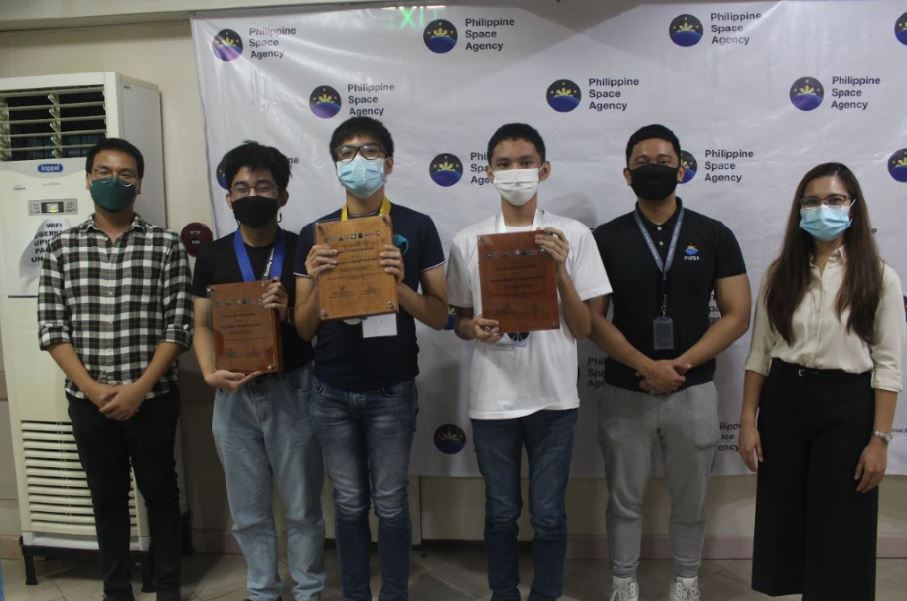
All student campers also went head-to-head at the “High Tide: Space Science Contest” where participants were given 30 minutes to answer a pen-and-paper elimination test consisting of 50 questions.
Benedict Pangilinan of Navotas National Science High School won the championship. Lance Chrysler De Jesus of Caloocan SHS clinched the second spot in the quiz bee finals and Lee Ramses Ibannez from Makati Science High School won third place.
The competing schools at the PhilSA Space Science Camp were selected by the Department of Education (DepEd) from Metro Manila’s 16 divisions to participate in the space camp organized by PhilSA in partnership with the Department of Education (DepEd), Department of Science and Technology Science Education Institute (DOST-SEI), Moon Village Association (MVA), and the University of the Philippines National Institute for Science and Mathematics Education (UP NISMED).
WATCH the highlights of the PhilSA space science camp here and SEND CONGRATULATIONS to the Filipino students who were hailed for fusing space science with environmental mission!
Good News Pilipinas is a Lasallian Scholarum Awardee. TELL US your good news story tips by messaging GoodNewsPilipinas.com on Facebook, Twitter, Instagram, or e-mail editor@goodnewspilipinas.com and WATCH Good News Pilipinas TV YouTube & Good News Pilipinas TikTok for more Filipino Pride stories!
The post Filipino students hailed for fusing space science with environmental mission appeared first on Good News Pilipinas.

0 Comments